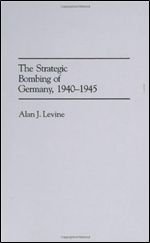Differences in theories about the origins of ceramics along with archaeologists’ interest in reconstructing the ways in which ceramics were used in social life have led to a vast literature on ceramic function. Archaeologists who study vessel function rely on pottery form (shape and size), use alteration, composition, archaeological context, and observations of ceramics used in contemporary societies. The latter includes the field of ceramic ‘ethnoarchaeology’, where archaeological questions (like vessel use) are addressed by observing how vessels are made, used, and discarded in ethnographic contexts.
Most ceramics recovered archaeologically were used as containers. These containers can be viewed as tools that even out spatial and temporal heterogeneity. They are used to transport contents, including water. They store materials for use at a later time, including seeds for planting or consumption. They also help to process foods to make them more palatable or more nutritious, such as the cooking of dried seeds. These container uses are supplemented by their social uses, such as expressions of social identity - including gender, social group affiliation, and status. When archaeologists refer to vessel function, they are primarily referring to their use as containers, but pottery also had important social and ideological components in many societies.
Variation in ceramic shape can be an important predictor of how vessels were used in the past. Vessels used to store liquids will generally have small apertures to promote containment security. Vessels used to transport goods often have appendages that make them more portable and, especially if carrying liquids, will have small necks. Serving vessels are usually wider than they are tall, with large apertures, which make them more accessible. It has been noted that extended cooking favors a rounded bottom over one that is flat. In addition, cooking of stews and gruels often requires an opening that is large enough to stir and serve from, but closed enough to keep the contents in. Despite these generalities, cooking vessels show tremendous intra - and intergroup variation making shape only one way to determine vessel function. In addition, some vessels were multifunctional and their shapes reflect compromises among a number of considerations of use.
Besides shape, archaeologists use size as a way of getting at differences in vessel form and use. Measurements of different parts of the vessel, such as the rim diameter, aperture (if different from the rim), maximum diameter, and height provide quantitative data for comparing vessel sizes. The use of ratios of these size measurements, such as maximum diameter to height, is a quantitative way of distinguishing different shapes present in a vessel assemblage. Volume is the best overall measure of vessel size but it is difficult to estimate on broken vessels.
When analyzing broken vessels, rim diameter is used more exclusively. The curvature fitting method is still the most widely applied and can also provide a means of estimating the percentage of the vessel represented. Nonetheless, rim diameter and volume may not be strongly correlated. Ceramic analysts frequently work back and forth between whole vessels and sherds to come up with both shape and size classes that can be broadly applied in a particular archaeological area.
Many archaeologists have pointed out that form focuses on the intended use of a vessel. In order to look at the actual use, archaeologists instead have focused on use alteration, including both ‘residue analysis’ and ‘use-wear’. Absorbed residue analyses have become increasingly important in recent years. The remains of foods cooked, served, or stored in a vessel become trapped in the pores of the vessel and are extracted in the laboratory. This is usually accomplished through GC-MS, a technique that uses gas chromatography to extract residues such as lipids and proteins, combined with mass spectrometry to identify their specific chemical signatures. GC-MS has been used to identify cacao in storage vessels from the Maya area, milk in vessels from Europe and Eurasia, beer and wine vessels in the Mediterranean, and changes in diet in a number of other areas of the world.
Another type of use alteration is use-wear. In this case, archaeologists study the abrasion, scratching, spalling, and pitting of the surface of sherds to understand differences in vessel use. Pitting has been used to suggest fermentation vessels - especially when absorbed residue analyses have not yet been applied. In other cases, use-wear has demonstrated that vessels found in one context, such as burials, were used in other contexts before their placement with the deceased.
The composition and surface treatment of ceramics is also a clue to the ways in which different vessels were used. Cooking vessels are rarely decorated and usually have a coarse temper, which helps to counteract the thermal shock of heating and cooking. Ceramics used for serving are usually made of finer pastes and are more often decorated. Again, these generalizations may vary from society to society and through time, but variation in the ways in which vessels were tempered may be important clues to the function of vessels in a particular archaeological assemblage as well as to changes in the way that vessels were used. For example, the shift from sand - to shell-tempered pottery in the Southeastern US has been found to be correlated with changes in diet and longer-duration boiling.
Differences in vessel use are important for what is called accumulations research and are based on the concept of ceramic ‘use life’. Use life is the life span of a ceramic vessel and can be affected by a number of factors, but most importantly on frequency of use. The shorter the use life, the more often a vessel class breaks and is discarded. The accumulation of different vessel classes can be helpful for reconstructing the duration of settlement occupation.




 World History
World History









